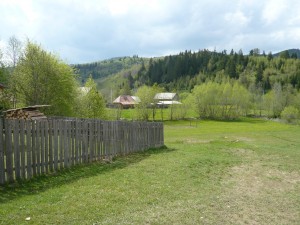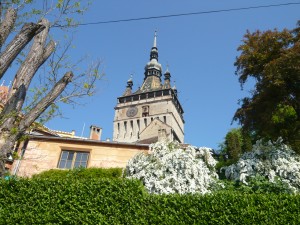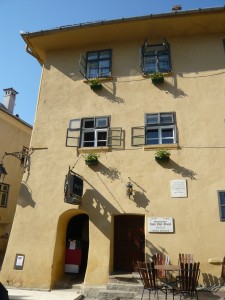
In recent years, since the Twilight series debuted, the vampire has enjoyed a fantastic popular renaissance. Vampires, to put it mildly, are really cool right now. For those seeking to combine their vampiric interest with their passion for traveling, what better place to go than Transylvania, where the movement first began?
While myths about blood-sucking monsters have abounded the world over for centuries, Dracula was the world’s first “pop culture”
vampire. Dracula, of course, was originally a character in Bram Stoker’s late nineteenth novel, Dracula. Vlad Drâculea Ţepeş (Vlad, son of Dracul, the Impaler) was likely the inspiration for the character Dracula. He was the ruler of Wallachia (now Transylvania) in the fifteenth century.

Any good Dracula pilgimage will begin in Sighişoara, Vlad’s birthplace. Sighişoara includes the house Vlad was born in and lived in for the first four years of his life, as well as the old Church on the Hill, a large bust of Vlad, and the old Clock Tower.
After spending the first four years of his life in Sighişoara, Vlad’s father, Vlad Dracul, moved the family to Târgovişte. The main attraction of Târgovişte is Chindia Tower,which holds many items which once belonged to Vlad Dracul.
Subsequent to this brief period in Târgovişte, Vlad spent his childhood in Istanbul as a hostage. Upon the death of his father, the Ottoman Turks whisked him back to Transylvania to put him on the throne, but he was shortly ousted.
After a few more years, Vlad returned to Transylvania in triumph, re-conquering his throne. He spent much of his time on the move, entrenched in a war against the Ottoman Empire. Unfortunately, his connections to places become ever more tenuous.

Nevertheless, there are three “must-see” castles connected to the Dracula legend. The first is Bran Castle, one of Vlad the Impaler’s many fortresses. The castle on a hill has gorgeous views, and a museum.
The second castle is Poenari Castle. This Castle is the site of Vlad the Impaler’s defeat at the hands of the Ottomans. It is also situated high on a hill after many steps, and its ruined state allows your imagination to run away with itself. Just be careful after dark—it is said to be haunted!
Lastly, Hunyad Castle is the supposed prison of Vlad the Impaler for several years after his defeat. This castle has a broader, less Dracula specific history, and incredible architecture to accompany its own haunted status.
Finally, Snagov is the possible resting place of Vlad the Impaler. In the middle of Lake Snagov is an island, upon which is located Snagov Monastery. The idyllic surroundings make for an unlikely site of the original vampire’s grave—if such a thing exists.

Though Dracula is extremely popular and well-known in English literature and pop culture, Romania is thankfully devoid of the rampant tourism strangling much of Europe. Transylvania is a swath of majestic, untamed countryside and dark forests. You can freely track Dracula across this beautiful country, which is neither East nor West, but an enigmatic marriage of the two—like Dracula himself.

